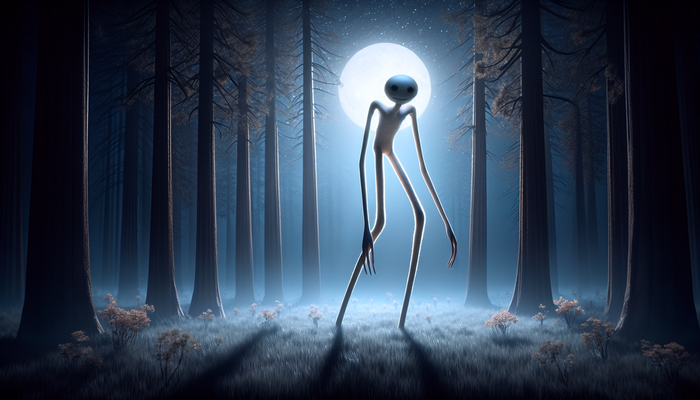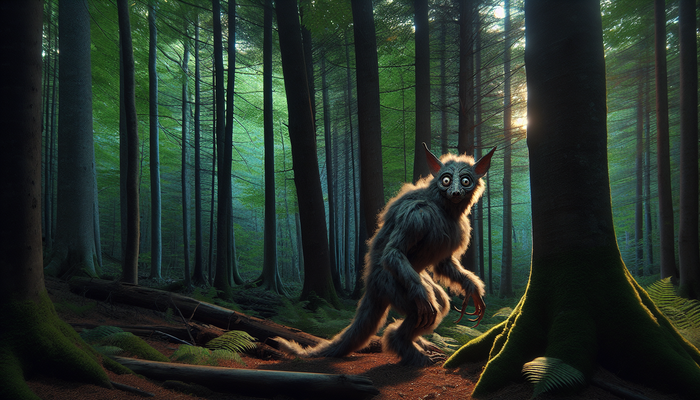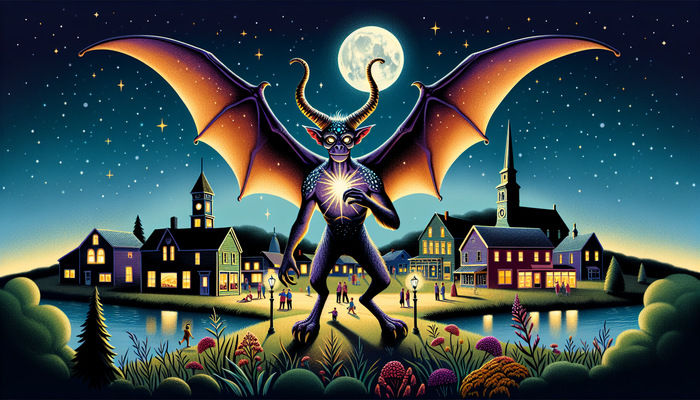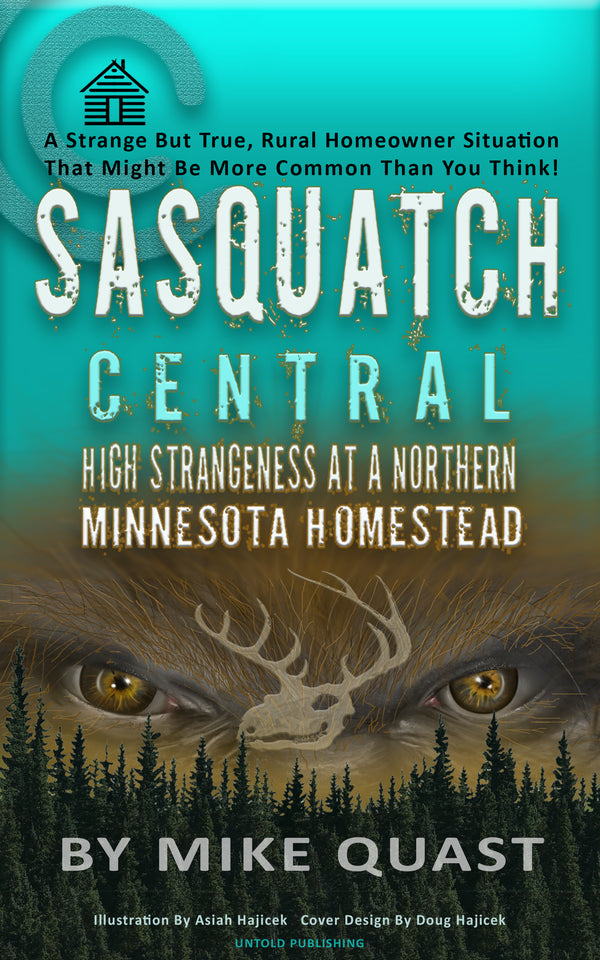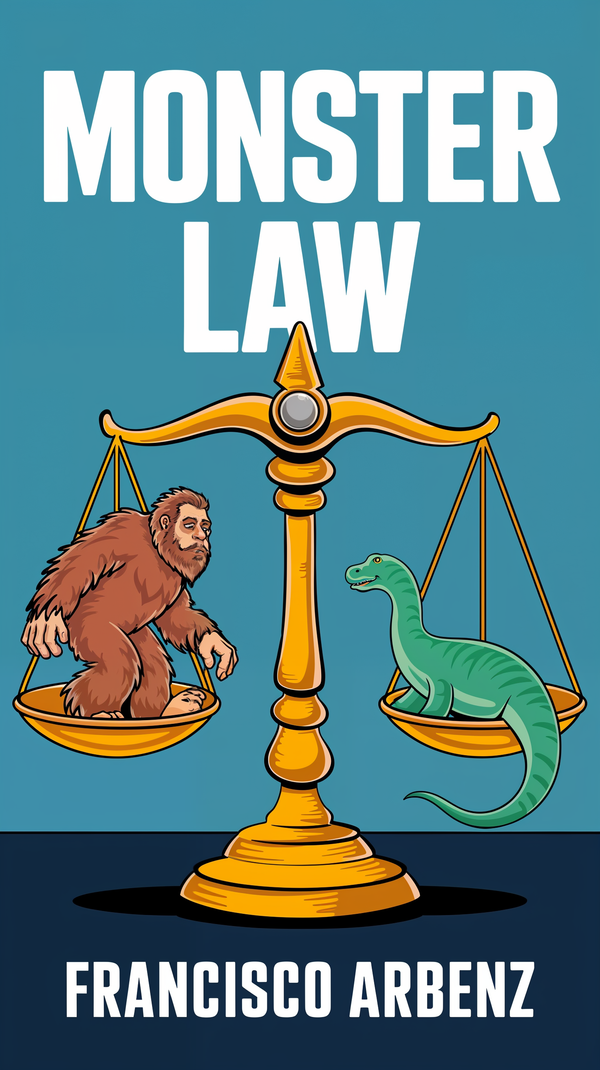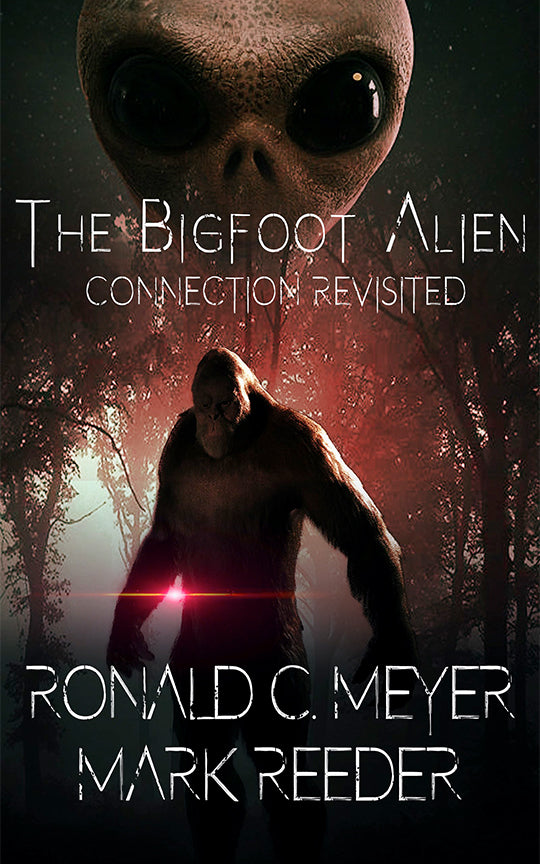Uncovering the Legend of Missouri's Elusive Bigfoot
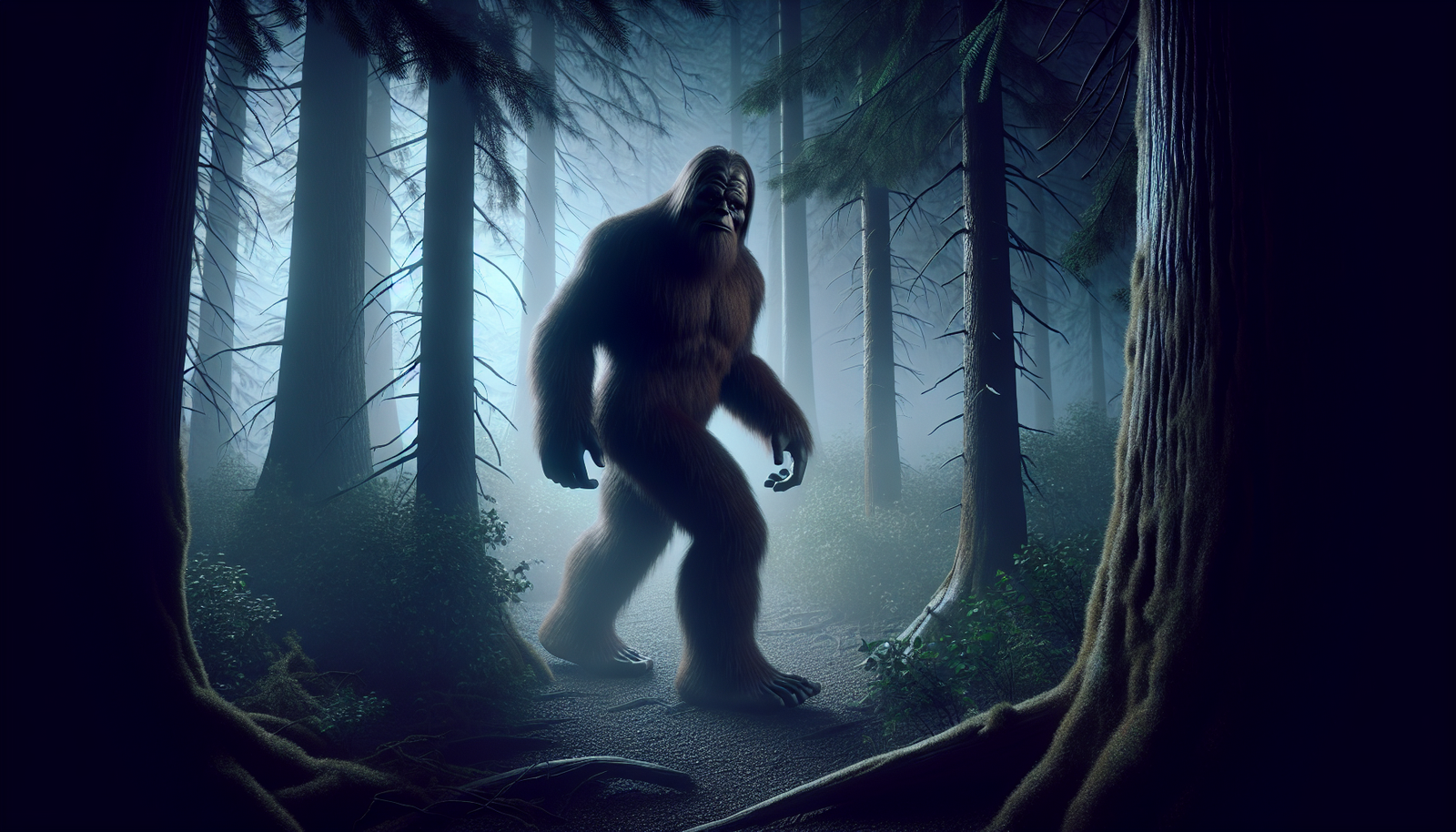
By Ava Martinez, Cryptozoologist
In the realm of cryptozoology, few creatures have captured the human imagination quite like Bigfoot. This elusive, ape-like being has been the subject of countless stories, sightings, and investigations, sparking a fascination that transcends generations and borders. As a biology teacher and cryptozoology enthusiast, I've long been intrigued by the tales of Bigfoot encounters across the United States. However, one state in particular stands out for its rich history of Bigfoot sightings and the enduring legacy of its most famous cryptid: Missouri, home of the legendary Momo creature.
Missouri's connection to Bigfoot is a tapestry woven from eyewitness accounts, media frenzies, and a cultural identity that has embraced the mystery of the unknown. At the heart of this tapestry lies the story of Momo, a creature that terrorized the small town of Louisiana, Missouri, in the summer of 1972. This incident, which garnered national attention and sparked a hunt for the elusive beast, has become a defining moment in the annals of cryptozoology and a testament to the enduring power of legend.
In this article, we will embark on a journey to uncover the legend of Missouri's elusive Bigfoot. We will delve into the Momo incident, exploring the eyewitness accounts and the media frenzy that followed. We will also examine the broader context of Bigfoot sightings in Missouri, highlighting the state's status as a hotbed of cryptid activity. Along the way, we will consider the various theories and explanations for these sightings, from the plausible to the fantastical. Finally, we will reflect on the cultural impact of Bigfoot in Missouri and the enduring fascination with this mysterious creature.
As we navigate this enigmatic landscape, it is essential to approach the subject with an open mind, a critical eye, and a healthy dose of curiosity. Whether you are a skeptic or a believer, the story of Missouri's Bigfoot is one that invites us to question the boundaries of our knowledge and to contemplate the possibilities that lie beyond the realm of the ordinary. So, let us step into the shadows and follow the footprints of a legend.
The Momo Legend: Louisiana, Missouri's Brush with Bigfoot
The Harrison family's terrifying encounter (July 11, 1972)
The story of Momo begins on a sweltering July day in 1972, in the small town of Louisiana, Missouri. Doris Harrison, a 15-year-old girl, was going about her daily chores, cleaning the bathroom sink while her younger brothers, aged 5 and 8, played outside. Suddenly, the tranquility of the afternoon was shattered by the sound of her brothers' screams. Doris rushed to the window, her heart pounding, and what she saw would forever be etched in her memory.
There, at the edge of the woods, stood a massive, hairy creature, towering at an estimated seven feet tall. In its arms, it clutched the lifeless body of a dog, its fur matted with blood. But it was the creature's face that truly haunted Doris. It had a pumpkin-shaped head, with glowing orange eyes that seemed to pierce through the very soul. As if the visual horror wasn't enough, a foul, putrid odor wafted through the air, assaulting Doris's senses and adding to the nightmarish quality of the encounter.
Doris's account of the creature, which would later become known as Momo, is a chilling reminder of the primal fear that lurks within us all. The idea of a monstrous, humanoid beast lurking in the shadows of our world is one that has permeated folklore and mythology for centuries. Yet, for Doris and her family, this was no mere campfire story or urban legend. It was a terrifying reality that would forever change their lives and the history of their small town.
Subsequent sightings and the media frenzy
News of the Harrison family's encounter with Momo quickly spread through Louisiana, Missouri, like wildfire. As the story circulated, more and more people came forward with their own sightings of the mysterious creature. One of the most notable accounts came from Richard Allan Murray, the town's fire chief and a member of the city council. Murray claimed to have seen the creature while driving along a creek bed, adding a level of credibility to the growing number of reports.
As the sightings multiplied, so did the media's interest in the story. Journalists and television crews from across the nation descended upon the small town, eager to investigate the strange goings-on and to catch a glimpse of the elusive Momo. The once-quiet streets of Louisiana became a bustling hub of activity, with reporters interviewing locals and scouring the woods for any sign of the creature.
The media frenzy surrounding Momo was a reflection of the enduring fascination with the unknown and the unexplained. In a world that often feels increasingly mapped and cataloged, the idea of a mysterious creature lurking just beyond the edges of our understanding holds a powerful allure. For the residents of Louisiana, the attention was both exhilarating and unnerving, as their small town was thrust into the national spotlight and their daily lives became intertwined with the legend of Momo.
The hunt for Momo
As the sightings of Momo continued and the media attention intensified, the people of Louisiana knew that they had to take action. A group of concerned citizens, led by the town's police chief, Shelby Ward, formed a 20-person posse to search for the creature and put an end to the mystery once and for all. Armed with rifles, shotguns, and a determination to protect their community, the posse set out into the woods, ready to confront whatever lay in wait.
Leading the charge was Gus Artus, a conservation agent with the Missouri Department of Conservation. Artus was a seasoned outdoorsman, with a keen eye for tracking and a deep knowledge of the local wilderness. He and his team meticulously combed through the dense foliage of Marzolf Hill, searching for any sign of Momo or its lair.
However, despite their best efforts, the posse found no concrete evidence of the creature's existence. They discovered a few disturbed dog graves and scattered bones, but nothing that could definitively prove that Momo was more than a figment of the imagination. After a grueling three-hour search, Artus and his team emerged from the woods empty-handed. In a statement to the press, Artus declared, "I am convinced, and the rest of us are also, that there is nothing that even looks like a monster on Marzolf Hill."
The fruitless search for Momo was a sobering moment for the people of Louisiana. It was a reminder that, despite the power of eyewitness accounts and the allure of the unknown, hard evidence is the ultimate arbiter of truth. Yet, even in the absence of physical proof, the legend of Momo continued to grow, taking on a life of its own and becoming an indelible part of the town's history and identity.
The enduring legacy of Momo
In the weeks and months following the initial sightings, the legend of Momo began to take on a life of its own. Local businesses, quick to recognize the potential for profit, started capitalizing on the creature's notoriety. A local restaurant began serving a "Momo Burger," while a ride at the nearby Six Flags amusement park was renamed in honor of the creature. For a brief moment, it seemed as though Momo had become the unofficial mascot of Louisiana, Missouri.
However, as the years passed and the sightings became less frequent, the fervor surrounding Momo began to fade. The media moved on to other stories, and the people of Louisiana settled back into their daily routines. Yet, the legend of Momo never truly disappeared. It lingered in the collective memory of the town, a strange and fascinating chapter in its history that would be passed down from generation to generation.
Fifty years after the initial sightings, the town of Louisiana celebrated the anniversary of the Momo incident with a special concert and event. The star of the show was Bill Whyte, a local musician who had written a song about the creature back in 1972. As Whyte performed his tune, the crowd sang along, their voices carrying the story of Momo into the warm summer night.
For some, the Momo legend is nothing more than a hoax, a product of overactive imaginations and the power of suggestion. They point to the lack of physical evidence and the inconsistencies in the eyewitness accounts as proof that the creature never really existed. Others, like Doris Harrison, remain steadfast in their belief that what they saw was real, a genuine encounter with an unknown animal that defies explanation.
Regardless of where one stands on the question of Momo's existence, there is no denying the enduring power of the legend. It has become a part of the fabric of Louisiana, Missouri, a strange and wonderful thread woven into the tapestry of the town's history. And as long as there are those who continue to search for answers in the shadows of the woods, the legend of Momo will endure, a testament to the enduring human fascination with the unknown.
Missouri: A Hotbed of Bigfoot Activity
Missouri's ranking in reported Bigfoot sightings
While the Momo incident may be the most famous example of Bigfoot activity in Missouri, it is far from an isolated case. In fact, according to data compiled by the Bigfoot Field Researchers Organization (BFRO), Missouri ranks as the 9th most active state in the country for reported Bigfoot sightings, with a total of 166 documented cases.
This high number of sightings is particularly striking when one considers the relative size and population of Missouri compared to other states. While larger, more populous states like California and Washington may have more total sightings, Missouri's concentration of reports is impressive, suggesting that there may be something unique about the state's environment or culture that makes it particularly conducive to Bigfoot activity.
One possible explanation for Missouri's high ranking is the state's abundance of heavily forested areas, particularly in the Ozark region. These dense, rugged woods provide ample cover and resources for a creature like Bigfoot to thrive, and the remote nature of many of these areas means that sightings may go unreported or unverified for long periods of time.
Notable Missouri Bigfoot encounters
While the Momo incident may be the most well-known example of Bigfoot activity in Missouri, it is far from the only notable encounter in the state's history. In fact, reports of large, hairy, bipedal creatures in Missouri date back decades, with some of the earliest documented sightings occurring in the 1960s and 1970s.
One of the most intriguing cases comes from 1967 and 1971, when several reports emerged from counties bordering the Ozark region. These sightings, which predated the Momo incident by several years, described creatures that were remarkably similar to the Louisiana beast, with witnesses reporting large, hairy, humanoid figures that moved swiftly through the woods and emitted strange, guttural sounds.
Another notable encounter occurred in 1998, when an anonymous county sheriff had a close encounter with a Bigfoot-like creature while on patrol in the Mark Twain National Forest. According to the sheriff's account, he was driving down a remote road in the early hours of the morning when a massive, eight-foot-tall creature emerged from the woods and crossed the road in front of his vehicle. The sheriff, an experienced hunter and outdoorsman, was so shaken by the encounter that he refused to speak about it publicly for years, only coming forward after his retirement.
More recently, in 2012, a driver in Vernon County, Missouri, reported seeing a large, upright figure with black, shiny hair while driving along Highway 54. The witness described the creature as being incredibly tall and stocky, with a distinctive, almost human-like gait. Despite the brevity of the encounter, the witness was adamant that what he had seen was not a deer or any other known animal, but something altogether different and unexplained.
Bigfoot sightings in urban and suburban areas
While many people associate Bigfoot sightings with remote, heavily forested areas, it is important to note that encounters with these creatures are not limited to the wilderness. In fact, there have been several notable sightings in urban and suburban areas of Missouri, suggesting that these creatures may be more adaptable and widespread than previously thought.
One such encounter occurred in 1973 in the town of Harvester, Missouri, a suburb of St. Louis. According to reports, a group of teenagers was walking near Tower Hill Road when they were suddenly chased by a large, hairy creature that stood approximately seven feet tall. The teens, terrified by the encounter, reported the incident to local authorities, who conducted a thorough search of the area the following day. Despite their efforts, however, no trace of the creature was found.
Similar reports have emerged from other suburban areas around St. Louis, with witnesses describing large, bipedal creatures that move swiftly through residential neighborhoods and wooded areas. These sightings, while less common than those in more remote regions, serve as a reminder that the mystery of Bigfoot is not confined to the deep wilderness, but may be closer to home than many people realize.
Bigfoot activity across the Mississippi River in Illinois
Missouri's reputation as a hotbed of Bigfoot activity is not limited to the state's borders. In fact, just across the Mississippi River in Illinois, there have been numerous reports of similar creatures, particularly in the central and southern regions of the state.
According to data compiled by the BFRO, a staggering 78% of all reported Bigfoot encounters in Illinois have occurred in these areas, with Madison County alone accounting for 24 sightings. This high concentration of activity is particularly noteworthy given Madison County's proximity to St. Louis, suggesting that the same environmental and cultural factors that make Missouri conducive to Bigfoot sightings may also be at play in the neighboring state.
The similarities between the Illinois and Missouri sightings are striking, with witnesses describing large, hairy, bipedal creatures that move swiftly through the woods and emit strange, guttural sounds. Some researchers have even suggested that the creatures spotted in Illinois may be part of the same population as those in Missouri, with the Mississippi River serving as a natural corridor for their movement and migration.
Regardless of whether the Illinois sightings are directly connected to those in Missouri, the high concentration of activity in this region serves as a reminder that the mystery of Bigfoot is not confined to any one state or area. Rather, it is a phenomenon that transcends borders and boundaries, inviting us to consider the possibility that there may be more to the natural world than we currently understand.
Theories and Explanations for Bigfoot Sightings
Gigantopithecus descendant theory
One of the most compelling and scientifically plausible explanations for the existence of Bigfoot is the Gigantopithecus descendant theory. Gigantopithecus was a genus of enormous apes that lived in Asia during the Pleistocene epoch, approximately 2.6 million to 11,700 years ago. These creatures were the largest known primates to ever exist, with some estimates suggesting that they may have stood up to 10 feet tall and weighed over 1,000 pounds.
According to the Gigantopithecus descendant theory, some of these massive apes may have migrated across the Bering Strait land bridge during the Pleistocene era, when sea levels were much lower and a connection existed between Asia and North America. Once in the New World, these creatures could have evolved and adapted to their new environment, eventually giving rise to the modern
From Bigfoot to UFOs: Hangar 1 Publishing Has You Covered!
Explore Untold Stories: Venture into the world of UFOs, cryptids, Bigfoot, and beyond. Every story is a journey into the extraordinary.
Immersive Book Technology: Experience real videos, sights, and sounds within our books. Its not just reading; its an adventure.


